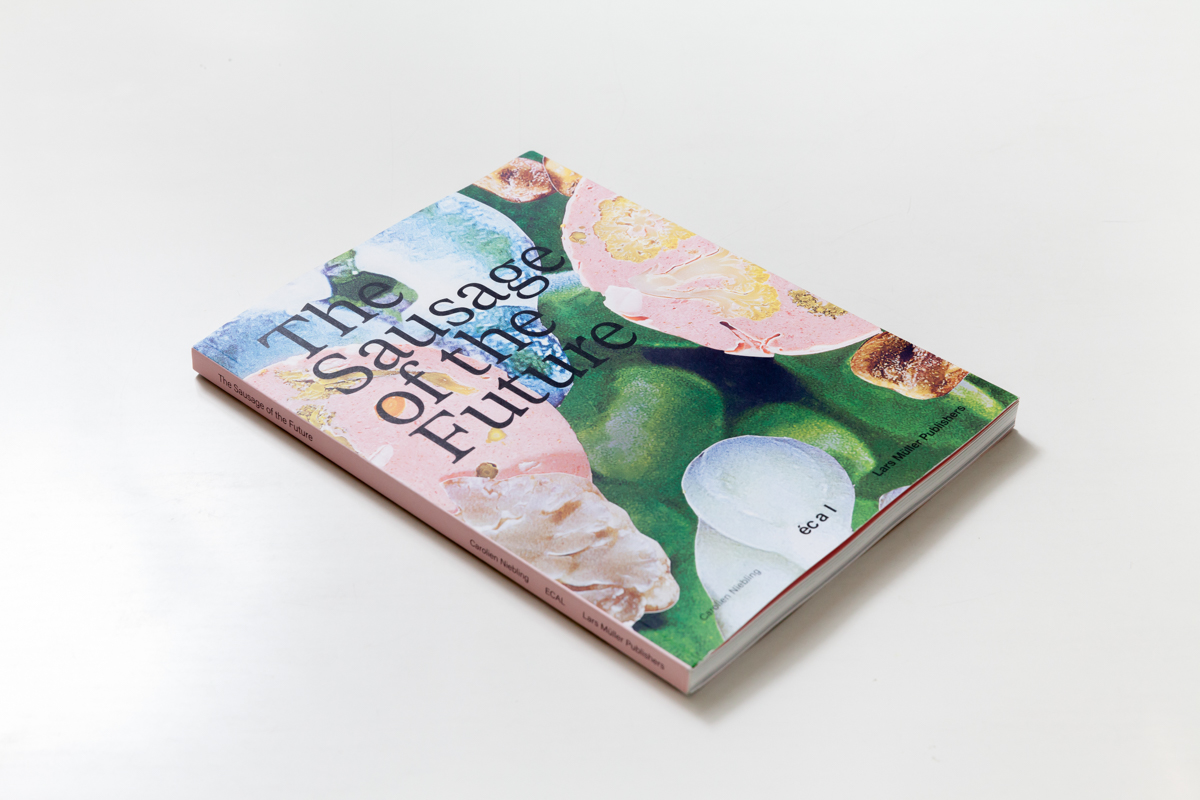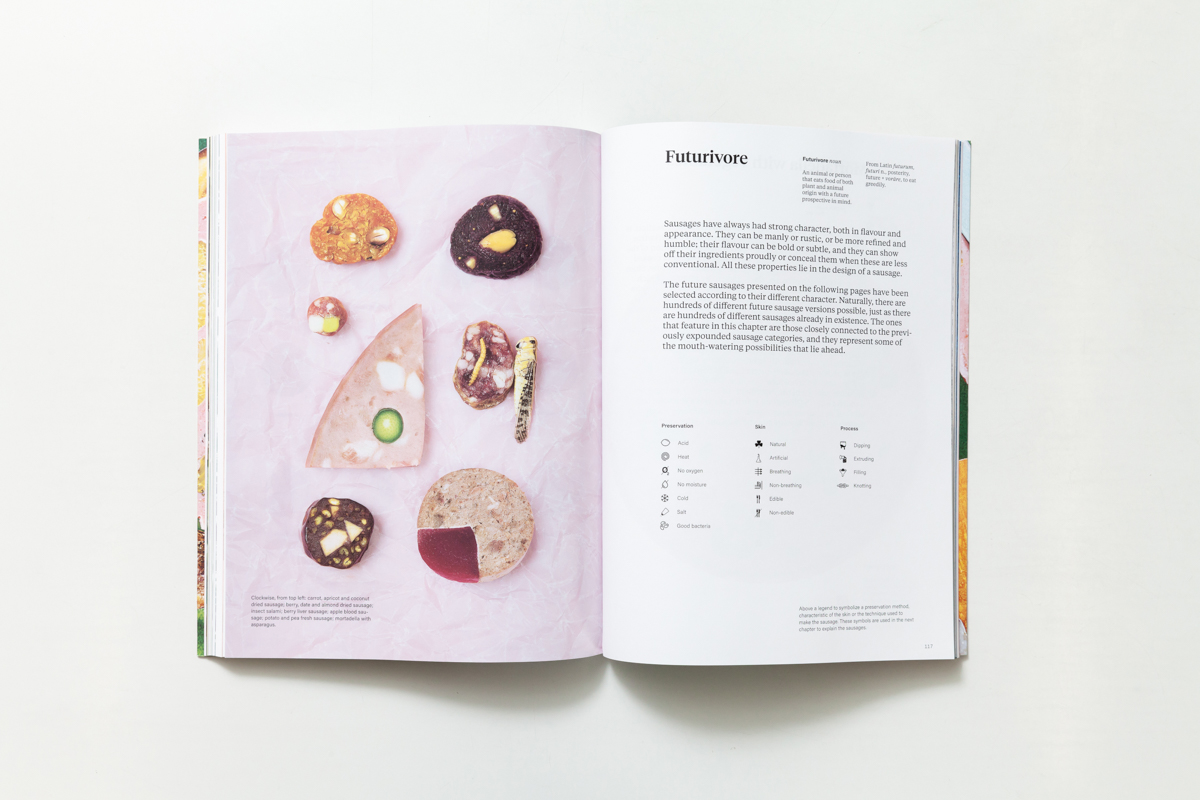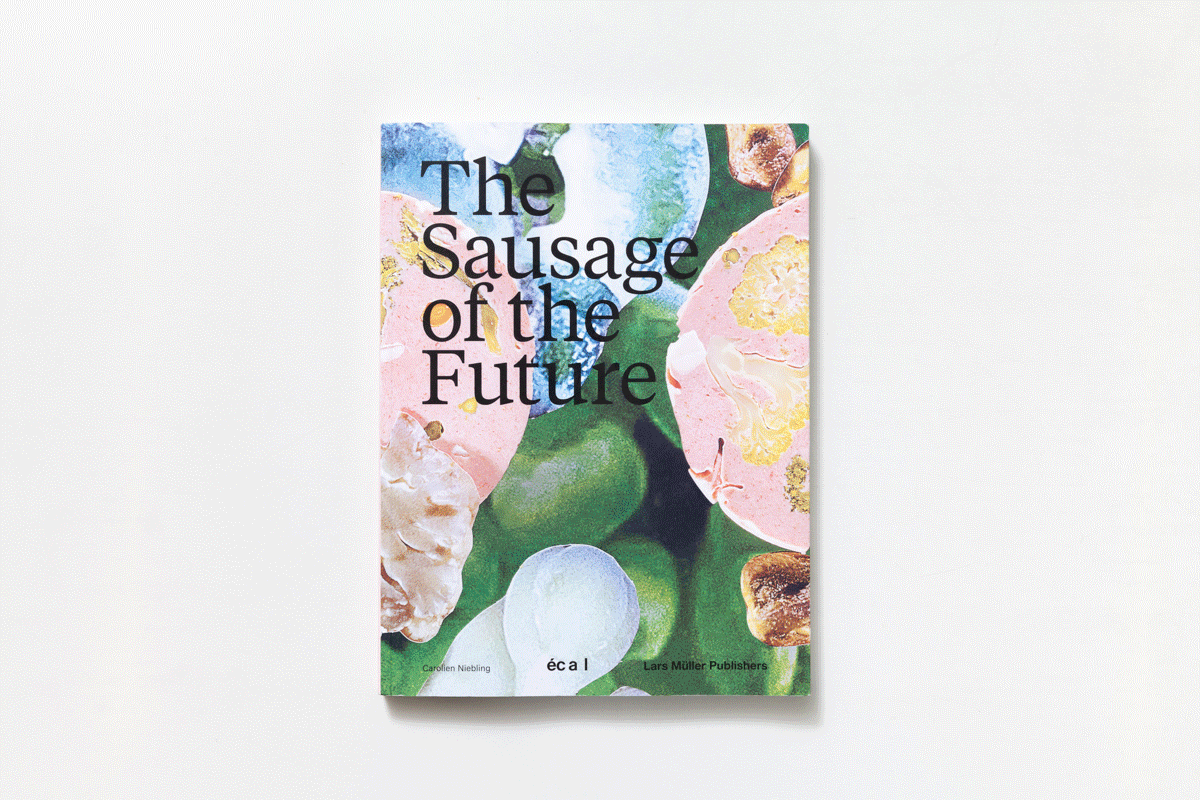A combination of scientific and design that intends to see whether the ‘sausage’ can become an alternative for future foods

“According to the Food and Agriculture Organization (FAO), we are facing a serious shortage of protein-rich-food. Meat, in particular, will be scarce. One reason for this is over-consumption: in today’s world, we simply consume too many animal products. So, I wondered, can we look to the sausage to provide a solution once again?,” said Caroline Niebling, a food and product designer about her co-research project ‘The Future Sausage’ with a master butcher, Herman ter Weele, and a molecular chef, Gabriel Serero. The research intends to see whether the ‘sausage’ can become an alternative for future foods by exploring methods in which foods are made and also experiments with potential ingredients ranging from plants to insects. “In the future, the consumption of meat should be reduced, while the diversity of ingredients in our diets should be increased.”
The research resulted in the book titled ‘The Sausage of the Future’ with its contents comprised of four parts: Theory, Method, Material, and Result. The first two parts look at the design of the sausage from its history, which dates back to the Bronze Age, to its anatomy comprised of six key components including mass, moisture, glue, flavoring, preservation and skin. It also tells about the production and the different kinds of sausages. The third part introduces us to some other ingredients such as offals, insects, plants, seaweed, seeds, grains, nuts, and legumes, all of which are edible proteins that have reasonable potential to serve as alternatives to meat. The last part of the book sums up all the research conducted for this project into an easy-to-understand graphic called the ‘sausage matrix’ which shows the proportions of the ingredients for the different kinds of sausages. Besides, this section also features appealing photographs of the results of this project—the newly designed, cooked sausages. Though some of the book’s contents may seem slightly less interesting when compared to other books published by Lars Müller Publishers, its nice combination of scientific and design research still makes ‘The Sausage of the Future’ a handy manual for fun kitchen experiments!


“ตามประกาศขององค์การอาหารและการเกษตรแห่งสหประชาชาติ (FAO) เรากำลังจะเผชิญหน้ากับภาวะการขาดแคลนอาหารโปรตีนสูงอย่างร้ายแรง โดยเฉพาะอย่างยิ่ง “เนื้อสัตว์” ซึ่งหนึ่งในสาเหตุนั้นก็คือปัญหาจากการบริโภคเกินขนาด ทุกวันนี้เราบริโภคผลิตภัณฑ์จากสัตว์กันมากเกินไป นี่เองที่ทำให้ฉันนึกสงสัยขึ้นมาว่า “ไส้กรอก” จะสามารถช่วยมอบวิธีแก้ปัญหาให้กับสิ่งที่เราจะต้องเผชิญกันนี้ได้อีกครั้งหรือไม่” Carolien Niebling นักออกแบบอาหารและผลิตภัณฑ์กล่าวถึงจุดเริ่มต้นของโปรเจ็คต์งานวิจัย The Future Sausage ที่เธอทำงานร่วมกับ Herman ter Weele เจ้าของร้านขายเนื้อชื่อดัง และ Gabriel Serero เชฟผู้เชี่ยวชาญการทำอาหารแบบ molecular เพื่อค้นหาว่า “ไส้กรอก” จะสามารถกลายเป็นอีกหนึ่งตัวเลือกของอาหารสำหรับอนาคตได้หรือไม่ ด้วยการกลับไปสำรวจขั้นตอนต่างๆ รวมทั้งทดลองผลิตด้วยวัตถุดิบใหม่ๆ ที่มีศักยภาพตั้งแต่ผักจนถึงแมลง “ในอนาคตการบริโภคเนื้อสัตว์ควรลดลง ในขณะที่ความหลากหลายของวัตถุดิบที่เรากินได้ควรจะต้องเพิ่มขึ้น”
ผลลัพธ์ของโปรเจ็คต์ที่ว่าเกิดเป็นหนังสือในชื่อ The Sausage of the Future โดยเนื้อหาภายในเล่มแบ่งออกเป็น 4 ส่วน คือ Theory, Method, Material และ Result สองส่วนแรกพูดถึงการออกแบบไส้กรอก ตั้งแต่ประวัติที่ย้อนกลับไปได้ถึงยุคสำริด กายวิภาคของไส้กรอกที่ต้องประกอบไปด้วย 6 องค์ประกอบอย่าง เนื้อ (mass), ความชุ่มฉ่ำ (moisture), ความเหนียว (glue), รสชาติ (flavoring), การถนอมอาหาร (preservation) และผิว (skin) จนถึงกรรมวิธีการผลิต และชนิดของไส้กรอก ในขณะที่ส่วนถัดมานำเสนอวัตถุดิบอื่นๆ ที่มีศักยภาพของโปรตีนที่เพียงพอต่อการทดแทนเนื้อสัตว์ได้อย่าง เครื่องในสัตว์ แมลง พืช สาหร่าย เมล็ดพืช ข้าวชนิดต่างๆ ถั่ว และถั่วฝัก ส่วนสุดท้ายเป็นเหมือนบทสรุปของโปรเจ็คต์ชิ้นนี้ซึ่งนอกจากจะนำเสนอ sausage matrix หรือสัดส่วนของส่วนผสมในไส้กรอกชนิดต่างๆ ด้วยกราฟิกที่เข้าใจง่ายแล้ว ภาพถ่ายของไส้กรอกที่ถูกผลิตขึ้นมาจริงๆ ยังถูกถ่ายทอดออกมาได้น่าสนใจ แม้เนื้อหาบางส่วนภายในหนังสือเล่มนี้เมื่อเทียบกันแล้วอาจจะดูน่าสนใจน้อยกว่าหนังสือเล่มอื่นๆ ที่อยู่ในสำนักพิมพ์ Lars Müller ไปบ้าง แต่ด้วยความครบถ้วนของเนื้อหาในงานวิจัยที่มีส่วนผสมของทั้งความเป็นวิทยาศาสตร์และงานออกแบบชิ้นนี้ ทำให้ The Sausage of the Future กลายเป็นคู่มือว่าด้วย “ไส้กรอก” ที่เราควรมีติดครัวไว้ทดลองทำอะไรสนุกๆ ตาม
TEXT: PAPHOP KERDSUP
PHOTO: KETSIREE WONGWAN
thefuturesausage.com
lars-mueller-publishers.com

